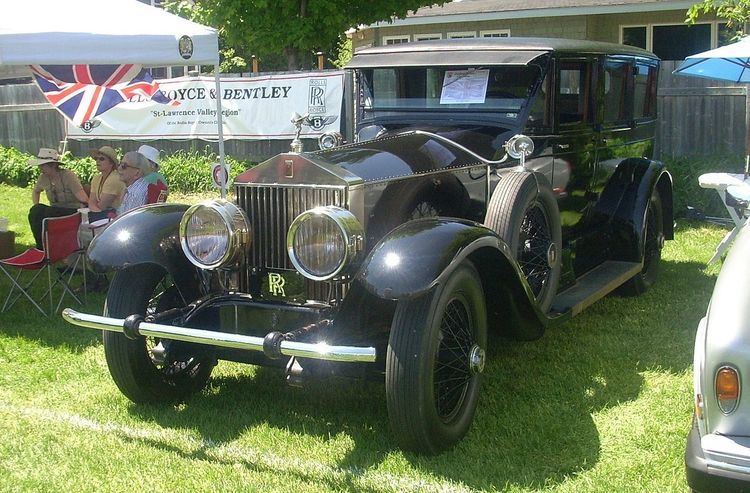Class Luxury car | Also called 40/50 Phantom Body style 4-door sedan | |
 | ||
Production 1925–19313512 produced Assembly Derby, EnglandSpringfield, Massachusetts | ||
The Phantom was Rolls-Royce's replacement for the original Silver Ghost. Introduced as the New Phantom in 1925, the Phantom had a larger engine than the Silver Ghost and used pushrod-operated overhead valves instead of the Silver Ghost's side valves. The Phantom was built in Derby in England and in Springfield, Massachusetts in the United States. There were several differences in specification between the English and American Phantoms. The Phantom was replaced by the Phantom II in 1929, at which point it was called the Phantom I.
Contents
Name
Introduced in 1925, the Phantom I was Rolls-Royce's second 40/50 hp model. To differentiate between the 40/50 hp models, Rolls-Royce named the new model "New Phantom" and renamed the old model "Silver Ghost", which was the name given to their demonstration example, Registration No. AX201. When the New Phantom was replaced by another 40/50 hp model in 1929, the replacement was named Phantom II and the New Phantom was renamed Phantom I.
Drivetrain
One major improvement over the Silver Ghost was the new pushrod-OHV straight-6 engine. Constructed as two groups of three cylinders with a single detachable head, the engine was described by Rolls-Royce as producing "sufficient" power. The engine used a 4¼ in (107.9 mm) bore and undersquare 5½ in (139.7 mm) stroke for a total of 7.7 L (7,668 cc (467.9 cu in)) of displacement. In 1928, the cylinder heads were upgraded from cast iron to aluminium; this caused corrosion problems. The separate gearbox connected through a rubberised fabric flexible coupling to the clutch and through a torque tube enclosed drive to the differential at rear, as in the Silver Ghost.
Chassis
The New Phantom used the same frame as the Silver Ghost, with semi-elliptical springs suspending the front axle and cantilever springs suspending the rear axle. 4-wheel brakes with a servo-assistance system licensed from Hispano-Suiza were also specified, though some early US models lacked front brakes.
Differences between US and UK versions
Like the Silver Ghost, the Phantom was constructed both at Rolls-Royces' Derby factory in the United Kingdom and at a factory in Springfield, Massachusetts in the United States. The US factory produced Phantom Is from 1926 to 1931.
Principal differences between the US and UK models included wheelbases and transmissions. Both versions were specified with the same standard 143½ in (3644.9 mm) wheelbase; the long-wheelbase U.S. model was 146½ in (3721.1 mm) and the UK 150½ (3822.7 mm). Both versions used a single dry-plate clutch, with US models equipped with a centre change 3-speed transmission and UK a 4-speed.
Other minor differences included fuel gauge placement, with the UK Phantom I's at the tank but some US models having one on the dash, and manual central lubrication systems. The UK Phantom employed Enots nipples, some times as many as 50, which required attachment of a special Enots oil pressure gun and needed time-consuming service at 500, 1000 and 2000 mile intervals; the US model used a centralized Bijur system which lubricated all the oiling points with a stroke of a single pump.
Bodywork
Only the chassis and mechanical parts were produced by Rolls-Royce. The body was made and fitted by a coachbuilder selected by the owner. Coachbuilders who produced bodies for Phantom I cars included Barker, Park Ward, Thrupp & Maberly, Mulliner, Hooper and the Italian coachbuilder Zagato. American Phantoms could be bought with standardized bodies from Brewster & Co., which was owned by Rolls-Royce.
